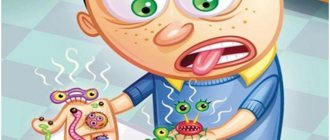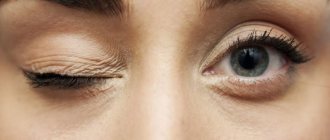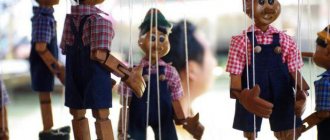Fear, a feeling of discomfort and the desire to run away from a person are nothing more than anthropophobia. Fear takes over when you have to speak on stage or answer in class at the blackboard or in front of an audience at the university. Before going out in public, fear causes your heart to beat loudly, your hands to sweat and tremble, and your legs to become weak. Many people feel a lump in their throat when they are forced to be in a group of other people. Fear of people is one of the forms of social phobia related to neuroses, in the International Directory of Classification of Diseases, listed under the code F 40 - phobic anxiety disorders. American psychiatrist G. Sullivan believed that in order to understand the reason that caused the phobia, it is important to “unravel the tangle” of relationships between a person suffering from fears and other people from his close circle.
What is this disease of fear of people called? Anthropophobia - now you know.
Anthropophobia and social phobia: what are the differences?
Both of these anxiety disorders fall under the same general category: social phobia. Both of them are associated with fear of people, communication with them, or any social activity.
However, there are differences between a fear of people and social phobia. With social phobia, life is much easier for an individual than for an anthropophobe. Experiencing fear of people, the anthropophobe is forced to constantly avoid contact with representatives of any social groups or with all people in general. A sociophobe experiences discomfort when participating in any social activities, when communicating with a team or an unfamiliar company. In his case, eliminating the object of phobia from life is somewhat easier.
What is the disorder
Anthropophobia is an irrational fear of people. This is a form of mental disorder. It may have different causes, but its consequences are similar: a person avoids any contact, depriving himself of human warmth, mutual understanding, and support due to false beliefs and fear.
Rational beliefs do not help, since fears are irrational in nature. A person becomes more and more immersed in himself, moving away from those who are armed. Even the most well-meaning family members do not seem pleasant and cause discomfort.
It is important to be able to distinguish anthropophobia from social phobia. Because the treatment methods will be different. An experienced psychotherapist can deal with this. Both disorders should be treated under his supervision with the help of dialogue and additional means of influence.
What are the differences between anthropophobia and social phobia?
Social phobes are those who avoid meeting certain people, public places, and speaking. They can cope with the problem on their own if they try hard. It all depends on the severity of the phobia. Anthropophobia is the fear of people anywhere, no matter one person or a crowd, a stranger or a relative. If a social phobe's close people do not cause rejection, then the anthropophobe diligently avoids contact even with relatives.
Symptoms on the physical level also vary. Social phobes may experience sweating or nervousness during a conversation or performance. Anthropophobia involves panic attacks, severe nervous tension if you need to go somewhere. A few days before meeting someone or going out into a crowded place, the anthropophobe will look for reasons not to do this and worry.
The symptoms of anthropophobia are more pronounced.
- panic attacks;
- increased heart rate;
- feeling of a lump in the throat;
- lack of air;
- cold extremities;
- sweating;
- fainting.
Often, fear of people leads to a state of horror. What is available to social phobes is completely excluded from anthropophobia. Anthropophobia is a more severe illness. And it's harder to deal with.
Causes and risk factors of anthropophobia
Although there are several assumptions about what anthropophobia is and what the mechanism of its development is, the exact causes are unknown. Most practicing psychologists are inclined to believe that its development is caused by events that take place in childhood or adolescence.
Anthropophobia is a deviation that occurs due to previously suffered:
- ridicule of peers,
- unfavorable family situation,
- resentment towards parents
- regular intimidation or punishment.
Detailed factors increase the likelihood that a child (whose personality is just beginning to form) loses trust in others. If you notice that he prefers privacy, this signal is worth paying attention to. A child, feeling calmer and more confident when alone, may come to the conclusion that the only safe person for him is himself. This is the starting point that leads to the emergence of anthropophobia.
Fear of people most often overtakes individuals:
- with a weak type of nervous system,
- prone to increased levels of anxiety,
- with neuroses,
- having low self-esteem and excessive self-criticism.
People with anthropophobia do not consider themselves part of society, sometimes as inferior or useless members of it. This is an exaggerated reaction of the psyche to a possible repetition of violence, ridicule and aggression from others, which came from parents, classmates or strangers.
What is anthropophobia
The name is derived from the ancient Greek words ánthrōpos, meaning "man", phóbos, meaning "fear". Anthropophobia is the fear of people. More often we are talking about fear of a particular group or fear of people with a specific feature. However, it happens that an anthropophobe is afraid of every passerby or those with whom he regularly meets.
There are several subtypes of fear of people:
- fear of strangers;
- fear of big people;
- fear of crowds (crowds);
- fear of a loved one;
- fear of strangers;
- fear of people touching;
- fear of losing a person;
- fear of communicating with people;
- fear of one's relatives;
- fear of a specific person or group of people;
- fear of women or men;
- fear of people with a common feature (hair color, facial expressions, height, habitual gestures, profession, etc.);
- fear of dating;
- fear of bodily contact and close interaction;
- fear of all people.
The specificity of the phobia depends on who or what the psychotrauma is associated with. For example, if a person in childhood was afraid of his father, and he had a beard, then in the future the victim may be afraid of all people with a beard. We'll talk more about the reasons below.
It is important! Anthropophobia is a subtype of social phobia. Both fears are related to social interaction, but they are different phobias. Social phobia is more associated with interaction situations, communication in a group. With anthropophobia, the patient is afraid of people; he is uncomfortable even just being alone with one person.
Signs of anthropophobia
Anthropophobia is expressed by a specific clinical picture, which involves cognitive and autonomic disorders. Cognitive manifestations include an inexplicable, persistent fear of the thought of speaking, touching a person, going out to people, or meeting a dangerous person. Autonomic symptoms of fear make themselves felt:
- tremor of the limbs;
- attack of suffocation;
- rapid heartbeat;
- numbness;
- redness or pallor of the face, spots on the chest;
- sudden sweating;
- vomiting, diarrhea.
When panic attacks occur in anthropophobes, there is a need for compulsions - obsessive motor acts that have a protective meaning and are of the same type. Often compulsions are associated with cleaning (washing hands, cleaning, wiping surfaces, dishes). Fear of people, as a rule, has a high level of comorbidity, that is, it is combined with other disorders or diseases, such as depression, alcoholism, and drug addiction. Fear of communication is associated with autism.
Definition and reasons for the development of anthropophobia
Anthropophobia is an uncontrollable panic fear that appears when encountering and communicating with certain people. This could be everyone around you, or certain groups of people - for example, drunk people or people with pronounced characteristics. Accordingly, the answer to the question, what is the name of a person who is afraid of people - anthropophobe. He should not be confused with a social phobia, but we will talk about this a little later.
As a rule, fear originates in early childhood, but manifests itself most often in adolescence. Among the main reasons it is worth highlighting:
- Unfavorable atmosphere in the family;
- Conflict relationships in a children's team;
- Mental trauma associated with strangers - fear, stress, shame or conflict;
- Violent actions by parents - mental and physical;
- Exposure to criticism and ridicule;
- Unsuccessful attempts to build relationships;
- Personal failures and excessive mental/physical stress.
Those at risk are considered to include those who are prone to emotional instability, high sensitivity, or already suffer from certain mental disorders.
Features
Fear of people is a form of social phobia. Its peculiarity lies in the fact that in the life of an individual subject to it there is always an object of fear, which is almost impossible to remove or isolate.
Often, a phobia spreads to a specific group of people who have common external or behavioral characteristics:
- fat or thin;
- bald;
- bearded;
- with tattoos;
- sociable or silent;
- any other.
An anthropophobe may be afraid of accidental touching. He avoids looking other people in the eye and tries to look away. Forced communication causes tangible physical discomfort to a person suffering from a fear of people. Information belongs to rewmed website
Why is fear of people dangerous?
An anthropophobe lives in constant tension. Because of this, he gradually develops secondary mental disorders, neuroses, depressive tendencies, paranoia, and persecution mania. The patient limits contacts and withdraws into himself. The difficulty is that doctors scare him, because they are also people. Anthropophobes cannot seek help; as a rule, they end up in the hands of a specialist in a very advanced state.
It is important! An anthropophobe experiences difficulties in learning and work. The formation and development of personality is impossible outside of society, without social interaction. The patient cannot live a full life.
Stages of anthropophobia
- Easy. The patient at this stage can independently overcome his fear by encountering the person who is the object of his fear. Only a little effort is needed.
- Progressive. Feelings of fear and other negative emotions in a traumatic situation are uncontrollable. For example, a person suffering from a fear of clowns, when faced with a representative of this profession, may experience a feeling of aggression or, on the contrary, tearfulness, his pulse will increase, sweating will increase, and trembling will occur in the limbs or throughout the body.
- Launched. An anthropophobe does not communicate with anyone, even with relatives this happens extremely rarely. Treatment of anthropophobia in this case is only possible by force.
Symptoms of anthropophobia
Fear of society and people is manifested by compulsive behavior. When meeting a stranger, an anthropophobe feels insecure and often displays inappropriate behavior. A person can make some meaningless movements, which he regards as protection from strangers. Examples of compulsive behavior are counting passing cars, searching for objects of a certain color, special changes in gait. Such actions help to distract from the people around you and block manifestations of fear.
If for some reason the anthropophobe cannot be distracted, a panic attack begins. It is manifested by increased blood pressure and increased pulse rate, hand tremors, and increased sweating. Being in a stressful situation, an anthropophobe wants to quickly run away and hide.
Such people experience serious problems with others. Their social circle is usually limited to just a few people, most often these are relatives or friends with whom the anthropophobe has known since childhood. Due to fear of people, there is a deterioration in cognitive abilities, which negatively affects the development of new skills and work activity. As a rule, such people are employed in low-skilled jobs, which involve a complete lack of contact with others, or work from home.
In severe forms, anthropophobia leads to complete social maladjustment. A person may not leave the house for months, which further aggravates the problem. Voluntary retreat is becoming accessible thanks to food delivery services, online supermarkets and other benefits of our time.
Diagnosis of the disease
Diagnosis of anthropophobia is based on the characteristic signs of the condition and is carried out only by a specialist. It must be remembered that the symptoms of anthropophobia may indicate the presence of certain mental illnesses, so a patient with such a pathology needs an in-depth psychiatric examination. Anthropophobia is often observed together with some other types of phobias, for example, scoptophobia (panic fear of disgrace in front of others) and low self-esteem.
How to get rid of fear of people
To overcome your fear of people, you need to take the following steps:
- You should realize the very fact of the presence of fear, and how it adversely affects a person, and fully recognize the problem.
- Establish and specify the problem itself: what causes fear most of all - from several individuals or a large accumulation of them, from the inevitability of communication with them, etc.
- It is necessary to find the most suitable option on how to get out of a frightening situation. If this is an anthropophobe, then it is necessary to expand the circle of communication, develop a positive scenario with examples of situations of interacting in the company of other people, and consciously encourage when the circle of communication becomes larger.
- Consolidate your results. Developing communication skills is exactly what needs to be developed. At first, these may be isolated successful cases, then, slowly, one should expand one’s communication capabilities, increasing the potential for successful dialogue. This is the only way a person can drive away the annoying fear of people.
When taking these steps, you will have to feel a lot of resistance; it will be difficult to master in one moment what drives a person into fear, what he avoids most of all.
Treatment of anthropophobia
Anthropophobia requires targeted and long-term therapeutic work. It is very difficult for a person to cope with such a disorder, so the best way out is to consult a specialist. The psychotherapist teaches the patient methods of relieving nervous tension and tells how he can manage his emotions. In the process of group psychotherapy, various life situations are worked through. During such meetings, a person learns to openly express his thoughts and improves communication skills. As a result of psychotherapeutic treatment, the patient becomes ready for contacts in society and gets rid of the destructive defensive model - avoidance behavior.
The fight against anthropophobia begins with a detailed analysis of the causes of its occurrence. The main factor contributing to cure is the patient’s personal interest. If the therapist and the client join forces, relief is possible. During therapy, the patient gradually learns to contact people, starting with the simplest social actions - buying groceries, going to a help desk, traveling on a tram.
Drug treatment consists of prescribing a group of drugs to the patient:
- sedatives (Validol, Novo-passit);
- antidepressants (Hypericin, a drug based on St. John's wort);
- tranquilizers (Afobazol, Phenazepam).
There are contraindications, consultation with a specialist is necessary!
Phobophobia
Phobophobia is characterized by painful, intrusive, extremely unpleasant memories of previously experienced sensations. Memories can be provoked by a variety of circumstances: various external situations associated with the environment in which a patient with phobophobia once experienced anxiety and fear; scenes from books and films; emotional states similar to the state that preceded the first attack of phobophobia; random words of the interlocutor, etc. Attempts not to think about a possible repetition of the horror experienced are reminiscent of attempts “not to think about the white monkey” - the more a patient suffering from phobophobia tries to renounce unpleasant memories, the more often they emerge in memory.
Feeling powerless from the inability to control their own thoughts and memories, many people with phobophobia try to replace them with control over the outside world. It is possible to form a complex system of rituals, which often goes unnoticed by others. Due to the absence of a specific object of fear, there is a more pronounced tendency to generalize avoidance compared to other phobias. A patient suffering from phobophobia may be afraid of an attack of claustrophobia when traveling in a car, an attack of aerophobia when flying on an airplane, an attack of social phobia when communicating with another person, etc. Uncertainty and a huge number of “potentially dangerous” situations force the patient to significantly limit himself in all areas life.
People with phobophobia often associate their fears with concerns about their health. When describing attacks of fear, an emphasis may be placed on vegetative symptoms or a disturbance in the perception of oneself and the world. Patients suffering from phobophobia complain of palpitations, a feeling of shortness of breath, weakness in the legs, dizziness, discomfort in the stomach, nausea and a sudden urge to urinate. Some patients with phobophobia note a loss of sense of reality, a feeling of loss of control over their own body, an “emptiness” in the head, a narrowing of the field of vision and other visual distortions. These symptoms cause fear of dying, going crazy or losing memory.
Imaginary images of the tragic consequences of an attack of phobophobia provoke the release of adrenaline, which affects the activity of the autonomic nervous system. The body goes into an evolutionarily determined “fight or flight” mode of functioning. The pulse and breathing become more frequent, the tone of the smooth muscles located in the walls of the hollow internal organs (stomach, intestines, bladder) changes. This entails the appearance of the unpleasant physical symptoms listed above. Thus, the thoughts and feelings of a patient suffering from phobophobia turn into a kind of self-fulfilling prophecy, determined by the physiological mechanisms of regulation of the body’s activity.
As generalization progresses, more and more situations arise that provoke the emergence of a new attack of phobophobia. Any bodily sensation can trigger an attack. Attacks begin to be provoked not only by negative, but also by positive emotions. The longer phobophobia exists, the more frequent and intense the attacks of fear become. Fear of fear is accompanied by other mental disorders: depression, generalized anxiety disorder, obsessive-compulsive disorder. Some patients with phobophobia, in an attempt to normalize their mental and emotional state, begin to take alcohol and various medications. The development of alcoholism, abuse of benzodiazepines, and sedative-hypnotic drugs is possible.
Traditional methods of treatment
A phobia cannot be eliminated with the help of medications, but folk remedies can overcome unpleasant symptoms, cope with increased anxiety, have a calming effect, and improve sleep.
Anthropophobia can be treated with neuroleptics and antipsychotics, these are the rules of the traditional method. They can cause side effects on almost all systems and organs. Traditional treatment has a much gentler effect on the nervous system; the body does not get used to such remedies. In particular, you can drink juice from beets and carrots, infuse mint and lemon balm, juice from fresh motherwort herbs, decoctions from hawthorn berries and aster chamomile.
The dangers of social phobia
Social phobia can only conditionally be called a fear of society. When taken more seriously, this disorder does not mean a fear of people as such, but a fear of certain life situations in which the individual will find himself in the public eye. In these circumstances, the social phobe experiences a pronounced fear that he will certainly find himself in a humiliating or shameful position.
And then social phobia manifests itself with many very unpleasant symptoms: anxiety, panic, rapid heartbeat, increased blood pressure, impaired breathing, dizziness, stuttering, nausea, trembling hands, increased sweating. A person may experience redness of the skin of the face and neck, dry mouth, muscle tension, and may feel internal stiffness. The patient's condition may be aggravated by a feeling of unreality of what is happening.
If social phobia is not overcome, then against its background there is a high probability of developing other diseases. Firstly, there are various mental disorders: depressive, anxiety, anorexia, bulimia, panic attacks. The desire to stop attacks of fear with alcohol-containing drinks often leads to the development of alcoholism. The combination of social phobia with other diseases greatly increases the risk of suicidal episodes.
Secondly, the increased levels of adrenaline and cortisol secreted by the adrenal glands during an attack of fear increase the activity of the autonomic system. Long-term increased activity of the autonomic nervous system can provoke the development of hormonal diseases, gastritis, peptic ulcers, ulcerative colitis, heart attack, stroke and other somatic diseases.
Psychotherapy for anthropophobia
Successful treatment of the disorder is only possible if medication is taken in parallel with psychological correction and psychotherapy. Psychotherapy for anthropophobia involves several methods depending on the patient’s personal characteristics.
- Psychoanalysis. This is a rather lengthy process, as a result of which you can find the origins of anthropophobia and get rid of the problem forever.
- Cognitive and behavioral therapy is most effective if the person with anthropophobia knows what caused the disorder, and it happened in adulthood.
- Group psychotherapy is also successfully used in this case and can be combined with individual therapy.
A combination of medication and psychotherapy can be quite effective in treating anthropophobia if a person recognizes the irrationality of their fears and wants to get rid of them. Information belongs to rewmed website
Related posts:
- Panic disorder with agoraphobia The onset of a panic attack is often associated with the fear of getting into...
- Constant fear and anxiety in women Almost all people have experienced feelings of anxiety and fear at least once...
- Can temperature change due to stress? The human body reacts to stress in a variety of ways. Many people are interested in maybe...
- Is mental disorder treatable? By mental disorder, experts usually understand a special mental state that interferes with...
Self-medication
You can try to get rid of anthropophobia yourself. It's better than doing nothing.
- Remember all the traumatic situations from childhood that could provoke the development of anthropophobia. Write it down on paper.
- Take each one apart. Look at the problem differently. Give a positive emotional connotation, emphasizing that you have become more experienced and stronger.
- When imagining contacts with people, evaluate it positively. Replace fear with pleasant emotions. First only at home, then before going out.
- Every person who has offended you must be forgiven.
- Work on letting go of all negative emotions towards others.
- Imagine pleasant situations in which people are present. Meetings, kisses, praise, joint activities.
Breathing exercises and sports also give positive results in the treatment of anthropophobia. They free the body from mental constraints. Emotions go away on a physical level. Be sure to accompany psychological techniques with sports and breathing exercises.











